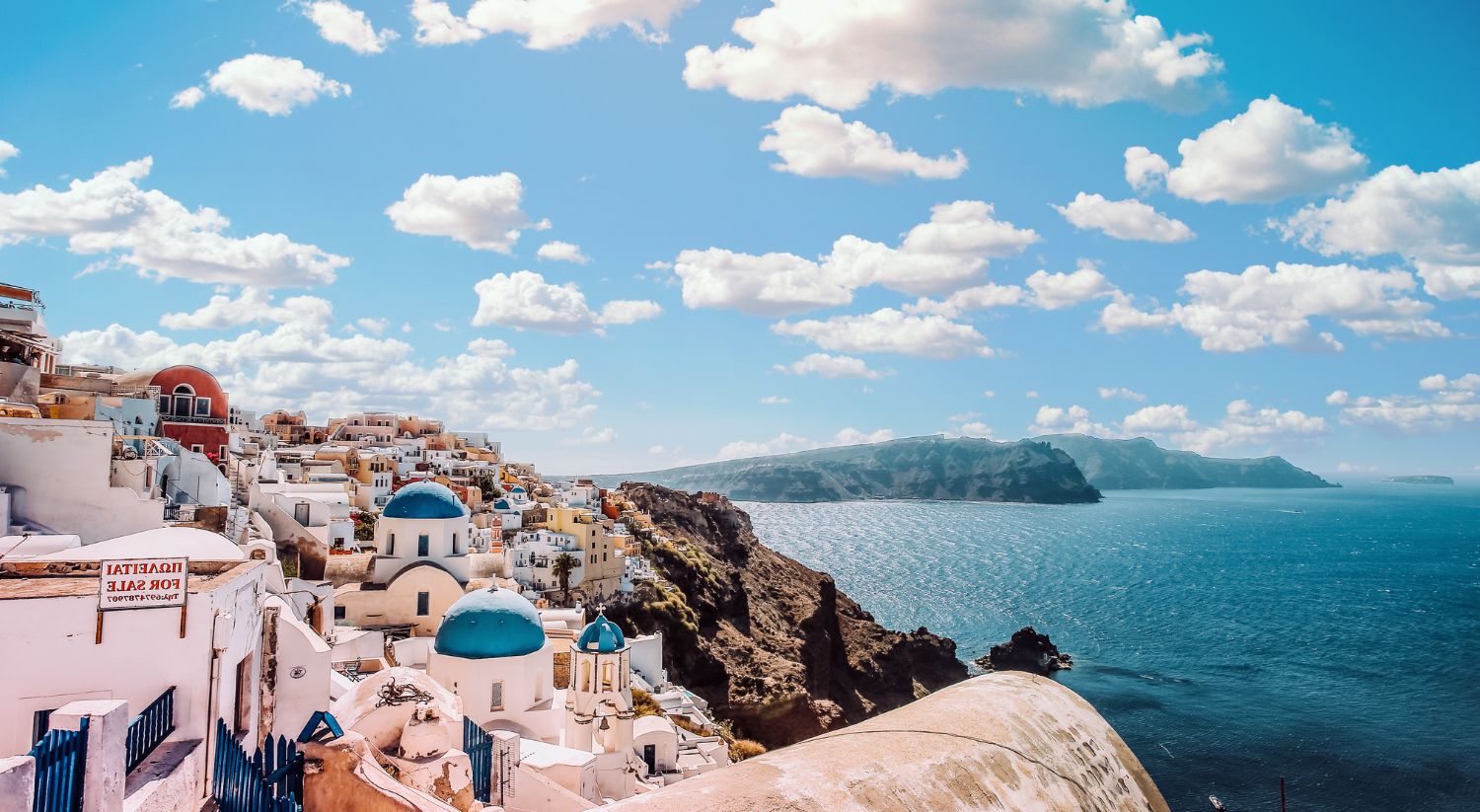
Speaking all the languages of the Mediterranean is, quite literally, a Herculean task. Just like the sailors who once claimed to have a love in every port, the Mediterranean is home to an incredibly diverse mosaic of languages. From the Syrian coast to Spain’s Costa del Sol, this vast sea hides much more than beaches and summer holidays.
Today, we’ll dive into how the languages of the Mediterranean have been shaped by the fires of its rich and complex history.
We’ll also explore the beautiful cultural fusion that flows along the shores of one of the world’s most visited seas. And beyond just languages, we’ll uncover how cultural diversity thrives throughout the regions that surround this ancient body of water—once ruled by Egyptians, Romans, Greeks, and Ottomans alike.
Get ready to experience the Mediterranean like never before!
We’re heading to the Mare Nostrum—the always fascinating Mediterranean Sea.
Why is there so much language diversity around the Mediterranean?
We know how boring history classes can sometimes be. But in this case, understanding the incredible linguistic diversity of the Mediterranean requires a quick trip to the past. We’ll have to rewind the calendar to long before Marbella or Nice were filled with tourists slowly roasting under the sun.
We could go all the way back to when early humans crossed from Africa to populate Europe over 1.5 million years ago. But that would turn this article into an epic saga. Instead, we’ll start when the first great civilizations discovered the Mediterranean as a true source of life.
Because yes—the Mediterranean and Western civilization are as deeply intertwined as land and sea. It’s often said, and rightly so, that the Mediterranean Sea was the cradle of Western civilization. Without it, the world as we know it wouldn’t exist.
So, what does this have to do with the diversity of Mediterranean languages? A lot, actually. Here’s the simple reason: since the dawn of time, the sea didn’t belong to anyone—and at the same time, it belonged to everyone. Sounds confusing? Let’s clear that up.
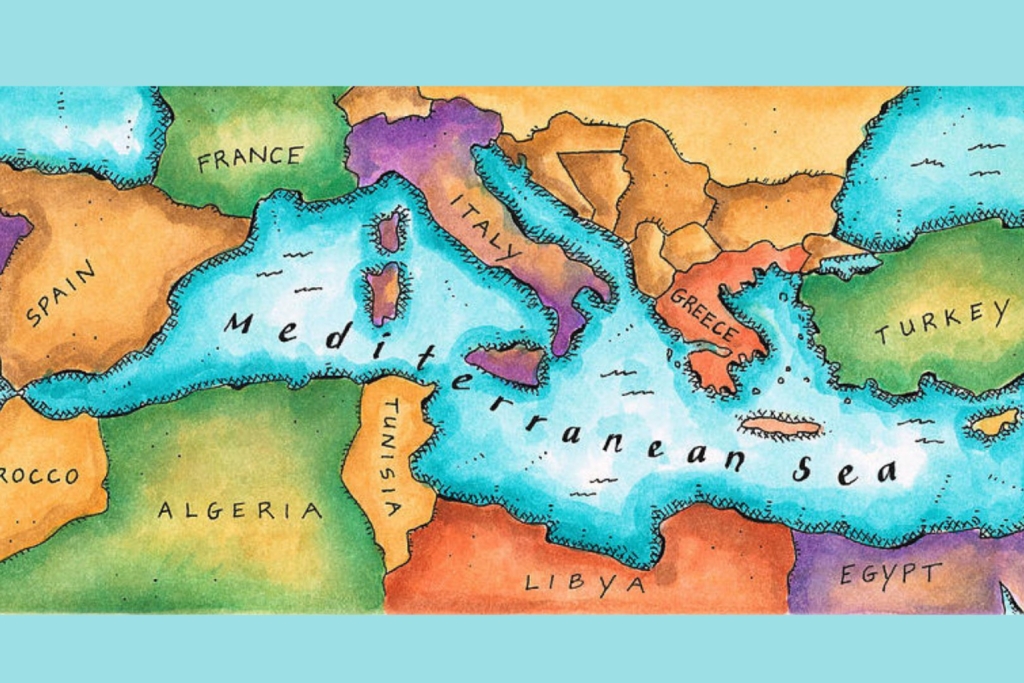
The Mediterranean: A lifeline for civilizations
If you take a closer look at your history books, you’ll notice something fascinating. The most expansive ancient civilizations all had one thing in common: they grew and thrived along the Mediterranean coast.
Mesopotamia, Rome, Greece, Carthage, Egypt, and Phoenicia—to name just a few—flourished around this sea. And so did the Turks, Macedonians, Etruscans, Byzantines, Castilians, and Venetians.
In ancient times, it was commonly accepted that whoever controlled the Mediterranean, controlled the world—or at least, the world as it was known then. That’s why this “Sea Between Lands” (from the Latin Mediterraneus) was the stage for many of history’s most brutal conflicts.
Why such fierce desire to dominate this sea? Commerce.
What the Romans proudly called Mare Nostrum—“Our Sea”—was the most efficient trade route in the ancient world. Through the Mediterranean, you could ship goods from Hispania to Judea. You could set sail from Constantinople at night and arrive in Alexandria by morning.
This versatility gave the Mediterranean enormous strategic value, leading to the foundation of ports—one of the biggest reasons behind the region’s linguistic and cultural diversity.
One port, one foot on the land
In an ideal world, a nation might settle a territorial dispute with its neighbor through diplomacy or arbitration. But even today, 9 out of 10 territorial conflicts end up on the battlefield. And in ancient times, that was the norm: the strong conquered the weak and claimed their land.
Even so, war—despite being ever-present—was avoided whenever possible. Battles came at great cost: human lives, economic setbacks, cultural regression, and deep scars that lingered for generations. For this reason, even ancient warrior societies explored every alternative before taking up arms.
One of the smartest ways to avoid territorial wars was to establish settlements in the lands they desired. Empires would send colonists across the Mediterranean to found ports in key locations. These ports would gradually grow into settlements and, much like building in Minecraft, would evolve into full-fledged cities.
As far as the sea would take them
The Greeks and Phoenicians were experts at these kinds of colonization strategies. These methods were later inherited by the Romans and Ottomans. In cities as far from their original homeland as Valencia or Málaga, archaeologists have uncovered Phoenician ruins dating back thousands of years. The same goes for villages in Tunisia, where Greek influences have been discovered—despite being separated by vast distances.
This type of civil urban growth didn’t just claim new land—it planted the seeds of civilization. These seeds would grow more powerfully than any army could conquer. And over the centuries, they laid the foundation for many of the languages spoken around the Mediterranean today.
But to understand this even more deeply, we need to take a closer look at the empires that once surrounded the Mediterranean Sea.
Mediterranean empires: How they shaped modern Mediterranean languages
The modern languages of the Mediterranean are deeply influenced by the cultural legacy of ancient empires. In fact, it’s nearly impossible to claim that any language on Earth is truly “pure.” No language has developed in a pristine vacuum, untouched by external forces.
And there’s a simple—yet complex—reason for that: language is an anthropological phenomenon, and as such, it is the result of continuous evolution.
As languages evolve, they borrow elements from others, feed off neighboring dialects, and grow through mutual exchange. It’s a never-ending process that still continues today. That’s why, when we talk about the languages of the Mediterranean, we must also talk about the great empires of the ancient world. Let’s explore the most influential ones.
Phoenicians
The Phoenicians were a seafaring people, and the Mediterranean was, in a way, their playground. Originating from what is now Syria, Lebanon, and Israel, they were skilled navigators who reached as far as the Strait of Gibraltar. Their primary goal? Trade.
For the Phoenicians, expanding across the Mediterranean meant gaining access to a variety of resources and markets. However, ancient trade wasn’t as simple as it is today. Merchants had to establish safe harbors, free from piracy, which led the Phoenicians to set up settlements across the entire Mediterranean coastline.
So, what language did the Phoenicians speak?
Their main language was Canaanite, a vital piece in the puzzle of modern Mediterranean tongues. Even more importantly, the Phoenician alphabet laid the foundation for the Latin alphabet—the one we use today in languages like English, French, and Spanish.
Greeks
The influence of Ancient Greece on Western history is undeniable. The Greeks gave us fundamental concepts such as philosophy, medicine, and politics—pillars of modern civilization. Their cultural legacy is so deeply rooted that it’s impossible to imagine the Western world without them.
It’s worth noting that Ancient Greece wasn’t a unified nation-state. Rather, it was composed of powerful city-states such as the Athenians, Spartans, Cretans, and Arcadians. These groups spoke different dialects, though they shared a common linguistic core.
As expert sailors, the Greeks navigated the Mediterranean and settled along the coasts of what is now Egypt, Algeria, and Lebanon. Greek archaeological remnants have even been discovered as far as Jordan and Canaan.
Carthaginians
Carthage was a powerful Punic civilization that dominated the North African Mediterranean coast, in regions now known as Tunisia, Libya, Algeria, and Morocco. It also controlled various islands in what is now French and Italian territory—Sicily, Sardinia, and Corsica were under Carthaginian rule for centuries.
Even southern Spain (Andalusia) holds ruins of ancient Carthaginian settlements.
As a maritime superpower, Carthage was Rome’s fiercest rival for control of the western Mediterranean. The famous general Hannibal even invaded Italy with his army, nearly conquering Rome itself. This immense influence helped shape the languages that would later evolve alongside Latin into what we now call the Romance languages.
And that brings us to the most influential empire of all…
Romans
What more can be said about the Roman Empire that hasn’t already been said? Perhaps this: the language you speak today—yes, yours—has been shaped in some way by Rome.
Even if your native language has Germanic or Celtic roots, Latin left its mark. Both English and Russian, for example, contain Latin-based vocabulary and structure. That’s how deep and widespread Rome’s influence truly was.
The Romans are largely responsible for the formation of Mediterranean languages as we know them. While they didn’t ban the use of local languages, they did make Latin the official language of the empire. So, a person from Palestine, Gaul, or Hispania would speak their native tongue—but also Latin.
From this fusion came one of the most significant linguistic heritages in human history.
Arabs
Referring to “Arabs” as a single group is a broad oversimplification. The linguistic influence of Arab empires on the Mediterranean spans many centuries. The Umayyad Caliphate, in particular, was responsible for the Muslim expansion into Europe.
In what is now the Iberian Peninsula (Spain and Portugal), Arab influence lasted for over seven centuries. Its linguistic impact is impossible to overlook.
Even though Arabic rulers in Al-Andalus did not ban local languages, Arabic was the dominant language used in administration, science, and daily life. This is why modern Spanish is a blend of Castilian, Arabic, and northern Celtic languages.
And, as the saying goes, the rest is history. The Spanish Empire spread many Arabic-rooted words across the globe. Many of these words didn’t just originate in Arabic, but specifically from Berber dialects in North Africa—which had already been influenced by Phoenicians, Egyptians, and Carthaginians.
The result? A true linguistic salad that shaped not only Spanish, but also Portuguese and French.
Now that we know a bit more about the history of Mediterranean languages, you might be wondering: Which languages should you learn if you want to understand the Mediterranean in all its richness?
Let’s find out.
The languages of the Mediterranean nowadays: A complex linguistic encyclopedia
There is no single Mediterranean language. In fact, there are more than a dozen. Understanding the origins of the languages spoken around the Mediterranean Sea is no easy task. It’s so complex, in fact, that we’ll skip the full history lesson for now. But here’s one key takeaway: imperial struggles have shaped it all.
The countless conquests and reconquests throughout history have been fought on Mediterranean waters, often through brutal battles and seemingly endless wars. These conflicts gave rise to the countries that today border this sea—many of which still face ongoing conflict and competition for control.
Such is the strategic importance of the Mediterranean that every major power has wanted at least a piece of it. From a linguistic perspective, this has created one of the world’s most unique cultural and linguistic melting pots. If someone wanted to speak all the languages of the Mediterranean, they’d have to learn:
Spanish
Modern Spanish is a far cry from the Castilian spoken by the Catholic Monarchs during the liberation of Spain. It’s also quite different from the Spanish spoken by Hernán Cortés or Francisco Pizarro when they arrived in the Americas.
In other words, today’s Spanish is far richer and more versatile than it was just a few centuries ago. It has absorbed elements from Arabic, Celtic, and Latin, and also incorporated numerous words from native American languages.
That makes Spanish one of the most enriched and diverse languages in the world—and certainly one of the most widely spoken along the western Mediterranean coast.
French
The French Riviera, or Côte d’Azur, has long been a dream destination for much of the world. Its stunning beaches and carefree lifestyle have turned it into a symbol of luxury and elegance. But beyond the glamour, France’s Mediterranean coastline has always been highly coveted.
From Carthaginians and Romans to Corsicans, Phoenicians, Normans, and Vandals, many sought control over this strategic land. Like Spanish, modern French is a blend of indigenous tongues, Latin, Arabic, Greek, and African languages. This makes it a product not only of Mediterranean influence but also of France’s former global colonies.
Italian
Cities like Naples, Bari, Venice, and Palermo are prime examples of Southern Italy’s Mediterranean identity. However, it’s important to clarify a few common misconceptions.
Although Italy is a peninsula, not all of its coasts border the Mediterranean Sea directly. Italy is surrounded by the Ligurian, Tyrrhenian, Mediterranean, Ionian, and Adriatic Seas. So, while it sits in the heart of the Mediterranean, not every Italian city is technically Mediterranean.
Still, Italy dominates two of the Mediterranean ‘s largest islands: Sicily and Sardinia. It’s also key to note that Southern Italian dialects are different from those in the north. The influence of Neapolitan, Corsican, Sicilian, and Calabrian has played a critical role in shaping Italy’s Mediterranean languages.
Arabic
When we think of the Mediterranean, places like Málaga or Mykonos often come to mind. But we shouldn’t forget the vast North African coastline, including countries like Morocco, Tunisia, Libya, Algeria, Syria, and Lebanon—all integral parts of the Mediterranean region.
With its rich variety of local dialects and expressions, Arabic is one of the most widely spoken Mediterranean languages today, especially along the southeastern coast. While the language varies by region, Arabic remains the common thread linking much of North Africa and the Levant.
Greek and Turkish
Greece is one of the most iconic Mediterranean nations. Its idyllic islands and spectacular coastlines draw millions of visitors every year. Naturally, Greek is among the most prominent languages of the Mediterranean, particularly across the northeastern shores.
On the opposite side, the Turkish coast—along with many islands scattered throughout the Aegean Sea—uses Turkish as its primary language. Both countries represent the eastern gateway to the Mediterranean’s linguistic diversity.
Other Mediterranean dialects and languages
Beyond the major languages mentioned, the Mediterranean is home to a vast array of regional dialects and minority languages. These include:
- Catalan
- Valencian
- Mallorquín (Majorcan)
- Sicilian
- Neapolitan
In fact, there are an estimated 30 to 40 regional dialects spoken across the Mediterranean basin today!
And let’s not forget one of the most fascinating historical languages: the “Mediterranean Lingua Franca”. This now-extinct pidgin combined French, Spanish, Catalan, Italian, and Provençal, and was once used by sailors, merchants, and pirates during the Middle Ages and Renaissance. Though it’s no longer in use, its legacy is still felt in various port cities and nautical expressions.
The Mediterranean is not just a sea—it’s a linguistic universe. Its languages are the product of thousands of years of migration, trade, conflict, and cultural exchange. And if you’re passionate about history, culture, and language, mastering even just a few of these idioms will open a gateway to one of the richest heritages on Earth.

Heading to the Mediterranean? Don’t forget to pack your translation tools
As you’ve probably realized by now, understanding the languages of the Mediterranean can be quite a challenge. Beyond the three or four most widely spoken tongues, you’d need to navigate dozens of regional languages and dialects. To make things even more complex, you’ll encounter multiple writing systems—including Latin, Arabic, and Greek alphabets, plus other less common scripts.
Luckily, you don’t need to become a polyglot to enjoy this earthly paradise. Why? Because the best solution is literally in the palm of your hand: Talkao translation tools.
By simply using your smartphone and downloading the Talkao translation apps, you’ll be able to:
Have real conversations in any language
Talkao Translate allows you to carry on fluid conversations in over 125 languages. This includes regional tongues, dialects, and local expressions, no matter the accent or colloquial phrasing. Perfect for chatting with locals or navigating diverse cultural contexts with ease.
Translate instantly, in real time
With Talkao’s real-time translation feature, you can translate while speaking—simultaneously and seamlessly. No more waiting for the translator to process your words. Thanks to AI technology, the translations are accurate, natural, and fast. Say goodbye to robotic or awkward translations!
Translate texts and official documents
Need to understand a flyer, a brochure, or even a legal contract? Talkao’s text and document translation tools allow you to translate any written content into your language within seconds, without needing any technical know-how.
Use the image translator with your camera
Trying to figure out a street sign, an info board, or a restaurant menu? No problem. With the Talkao Camera Translator, you don’t even need to type. Just point your camera at the text, and within seconds, you’ll see a clear, accurate translation—regardless of the alphabet used, whether it’s embedded in an image, or even handwritten.
With Talkao’s powerful AI-driven translation tools, the complex world of Mediterranean languages is no longer a barrier. So before your next trip to one of the most beautiful regions on Earth, make sure you pack your sunglasses, swimsuit… and Talkao!
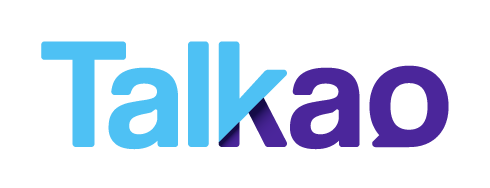



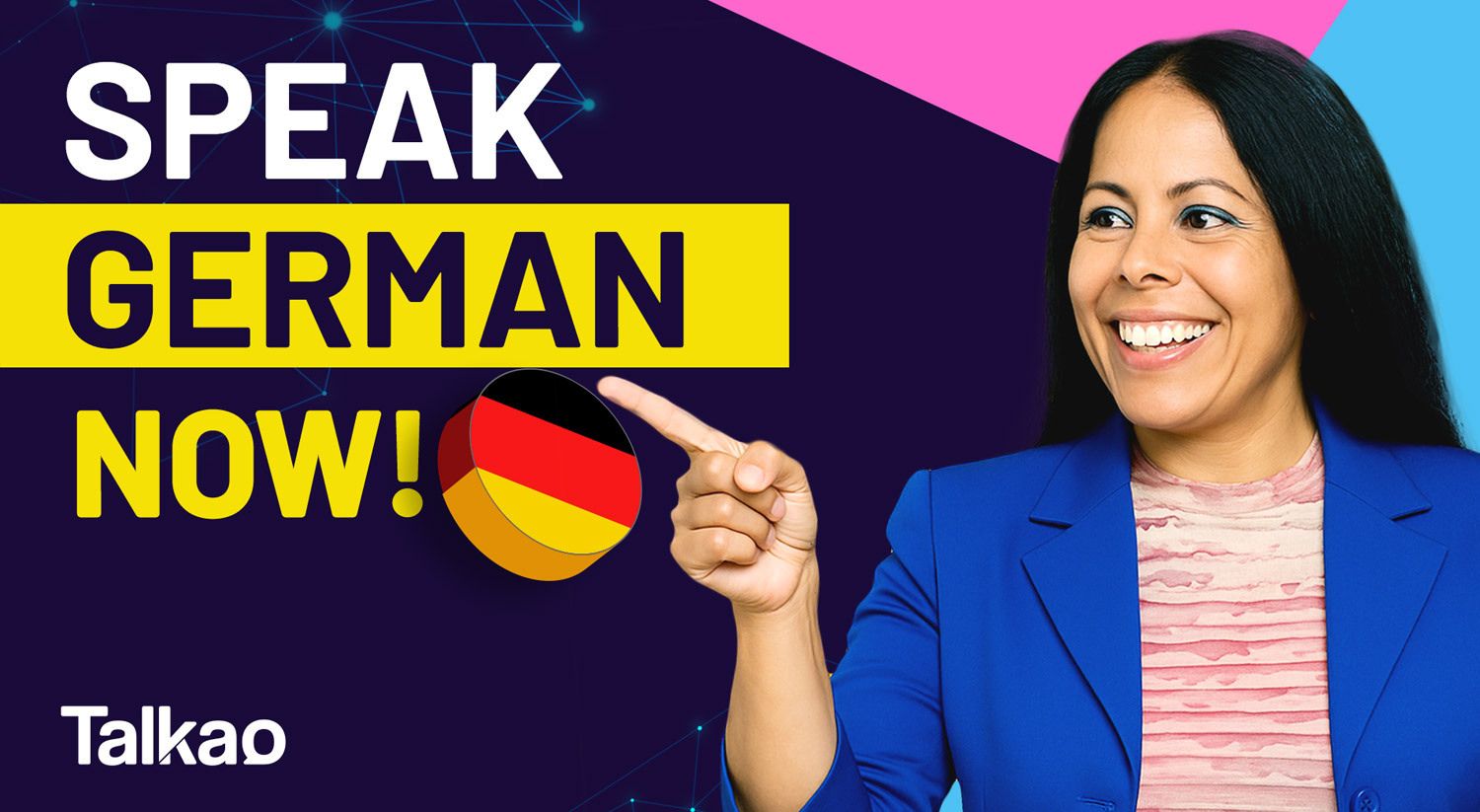
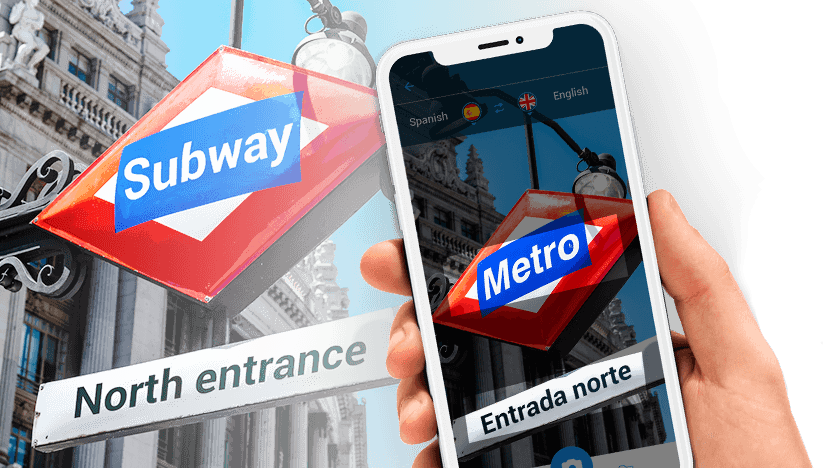




Newsletter